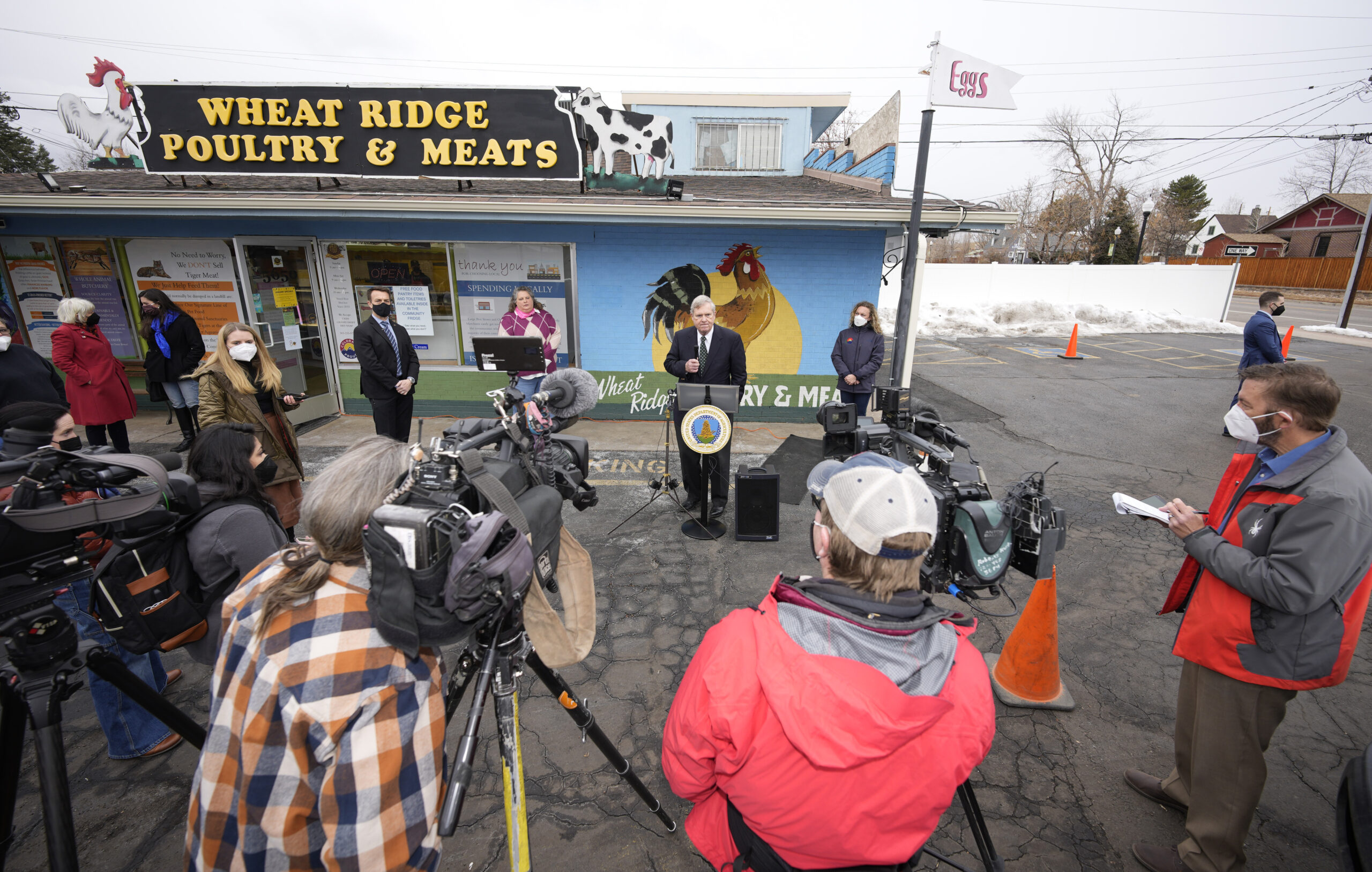U.S. Secretary of Agriculture Tom Vilsack pushes Biden administration’s supply chain plan in Wheat Ridge
January 14, 2022
David Zalubowski/AP PhotoU.S.
Agriculture Secretary Tom Vilsack speaks during a visit to Wheat Ridge Poultry and Meats, a locally-owned and operated butcher shop and meat processor, Friday, Jan. 14, 2022, in Wheat Ridge, Colo. Vilsack made the stop to talk about the Biden administration’s ongoing efforts to create more and better market opportunities for American farmers, ranchers and consumers.
U.S. Secretary of Agriculture Tom Vilsack said in Wheat Ridge on Friday that new federal funding aimed at expanding capacity and competition in the nation’s meatpacking industry could also help when COVID-19 and natural disasters force meat processors to shut down.
Vilsack spoke at butcher shop Wheat Ridge Poultry and Meats to promote the Biden administration’s $1 billion plan to expand independent processing capacity in the meat and poultry industry.
The new federal funding — announced earlier this month — will expand capacity and competition so that producers and shoppers aren’t so reliant on a small handful of large players.
“We want to make sure that when consumers go to facilities like this or to a grocery store, that they have the ability with their consuming dollar to support local and regional businesses and to support local and regional producers,” Vilsack said.
The administration’s plan is part of a broader executive order aimed at creating a more fair and resilient economy. Just four meatpacking companies control 85 percent of the beef market, administration data show. Both the pork and poultry industries are similarly concentrated, creating a bottleneck in the food supply chain which the administration says hurts farmers, ranchers and consumers.
The USDA wants to give out $150 million in funding for about 15 projects in the first phase of the program, with an additional $250 million deployed sometime over the summer. None of the funds have been disbursed yet, Vilsack said.
“We’re going to try to make sure that we have projects that are very, very small and some that are mid-sized. This isn’t going to go to large processors,” Vilsack said. “This is about independent processors. We hope that a number of farm-owned cooperatives take advantage of this. We hope that in rural remote areas, there’s an opportunity as well for very, very small production facilities to be created.”
The push for deconsolidation in the meat and poultry business comes as U.S. households face higher prices on everything from beef to gasoline. The cost and timeline of construction on the projects will dictate how long it takes for consumers to feel any relief, Vilsack said.
“Hopefully during the course of 2022, we see lower prices and more choice in the grocery store,” Vilsack said.
The administration’s plan also includes funding for training workers, reducing inspection costs and extending credit to independent processors.
